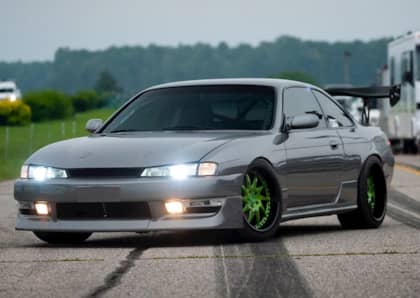The Case for the Hydraulic Handbrake: Maximizing Smiles Per Mile
Adding a hydraulic hand brake is a versatile modification that isn’t too invasive. It can make any vehicle more fun to maneuver while sparing the life of your cable-operated e-brake. There’s an abundance of lever style choices, including cylinder and reservoir sizes, so it shouldn’t take long to find a setup for your application, stature and fashion sense. As for me, I am 5’9” with gangly legs and monkey-like arms, so the hand brake didn’t comfortably fit on the driver’s side of the console. I also wanted it to be the center of attention—a conversation starter if you will, so I chose a taller OBP hydraulic hand brake and designed the handle to resemble a katana sword. Granted, the added style points might affect my reaction time between activating the hand brake and shifting gears, but I’m not competing or tracking milliseconds, just my quantity and quality of smiles per mile. Around a closed course, obviously… (Ahem.)
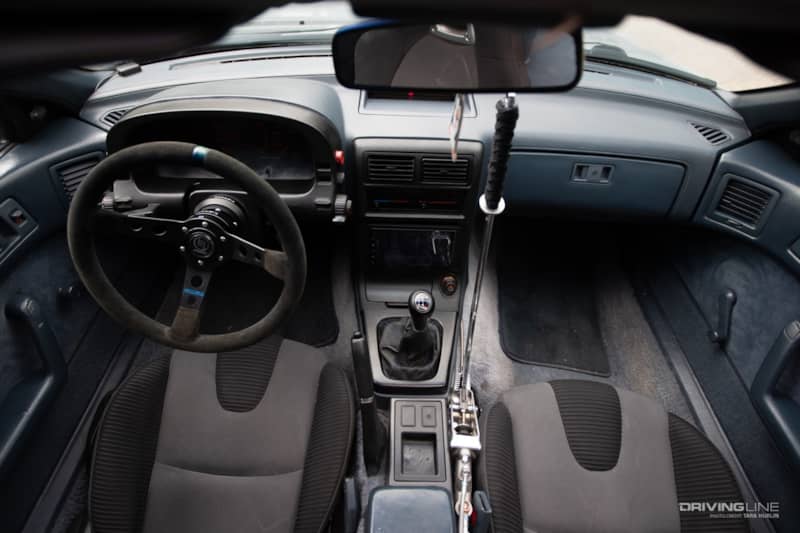
What does it take to install a Hydraulic Handbrake?
Installation was trouble-free, which is rare for me and my jalopy cars. It helps to have all the pieces to the puzzle before putting it together, including the hydraulic hand brake (attached to its own master cylinder), an external fluid reservoir, a left and a right rear caliper, brackets to hold said calipers, three braided steel brake lines (one routed from the master cylinder to the reservoir, the second from the master to the driver’s side rear brake caliper, and the third connects the driver’s side caliper to the passenger side), and the fittings to connect the lines. Oh, and brake fluid.
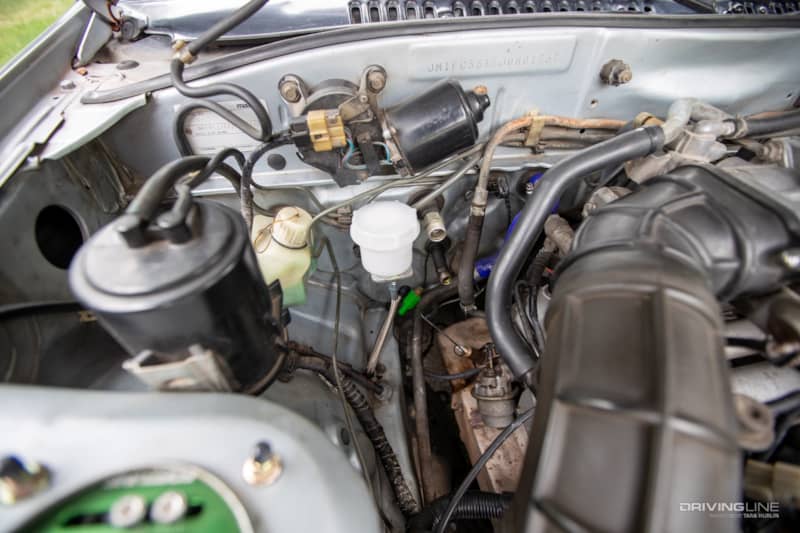
The handbrake’s braided lines run from the lever’s master cylinder to a fluid reservoir mounted under the hood on the firewall, and also through the floorboard behind the seat to the second caliper on each rear wheel. This basic setup is the same for AWD and FWD chassis cars.
RWD cars don’t have all the fun
Controlling self-induced oversteer and loss of traction gracefully is more easily done with a RWD platform, but it’s entirely possible to achieve with a FWD car. Perhaps the challenge adds to the appeal of maneuvering a FWD car in such a fashion. Focusing on controlling the vehicle’s weight transfer according to where the car is in the turn is key. It takes adequate speed, technique and timing. Adding power helps, of course, but you’d be surprised how far you can build your driving skills without dishing out more money for more horsepower.
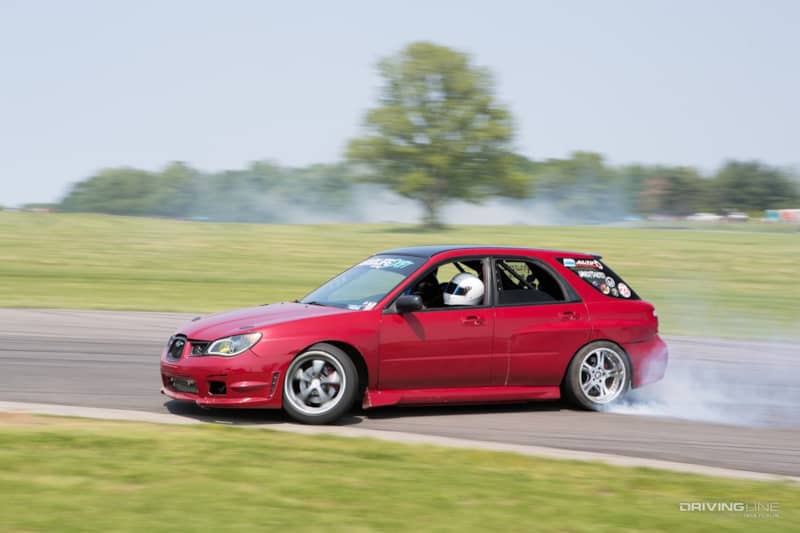
If you happen to own an AWD “fun car,” consider adding a “fun stick” and grasp your opportunity to learn a unique skillset. There are many people who will tell you it’s not possible to drift an AWD car, but with the right technique, it can be done. More horsepower helps, as does an understanding of your AWD system. It’s just doing what it’s designed to do: maintain optimum traction, so the driver has to outsmart the computer and take control. Guess what would help you outsmart the AWD system? A hydraulic handbrake.
Automatic vs manual transmission
Most competitive drift cars are equipped with a manual transmission for a reason. Having a clutch helps your RPMs rev high enough to keep the rear tires burning rubber, which also leads to a smoother slide, but an automatic transmission vehicle can still power through a drift. The more horses your car carries, the better. The absence of a clutch cuts almost 10- to-15 percent of the power and the torque converter can make the performance sluggish. A custom torque converter for a higher stall speed will help balance things out. If you own a newer model with all the automated driving restraints, er, assists, it may cause more complications, but that’s nothing that disconnecting speed sensors and ABS relays can’t fix. If you’re lucky, simply turning off traction control will do the trick.
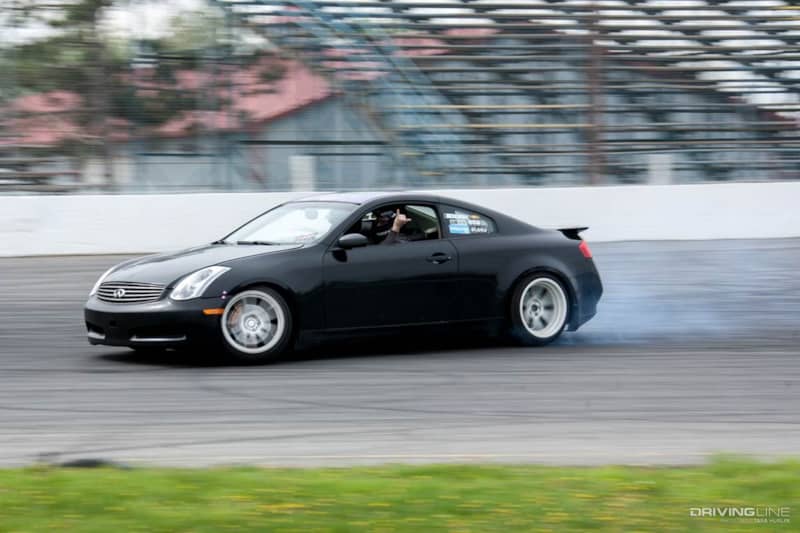
Since you won’t have the benefit of a clutch to control the car’s pitch in the turn, you’ll be relying on your flicking skills and, you guessed it, the handbrake. In comparison to manual transmission cars, drivers of automatics rely even more heavily on the hand brake to help break traction and initiate a drift. Carrying a drift and transitioning between angles, like the infamous figure eight, is exceptionally tricky without a clutch kick, but that too can be done. Gaining the skills to maintain enough speed to carry and transition a drift in an automatic car will certainly earn you extra bragging rights. You’ll hear a lot of folks say you can’t be competitive in drifting with an automatic transmission, but if achieving the most fun possible with your car is the ultimate goal, installing a hydraulic hand brake is just what the doctor ordered.
Everyone who owns a street-driven toy to drive even more spiritedly on track days needs a hand brake, especially the extra-talented drivers who can drift an AWD automatic. But be forewarned: once you start to break loose, you won’t want to stop. Installing a hand brake could cause an itch for a power increase.
Now that you know what to expect for your next wrenching weekend, take a look at which mods you should avoid.





